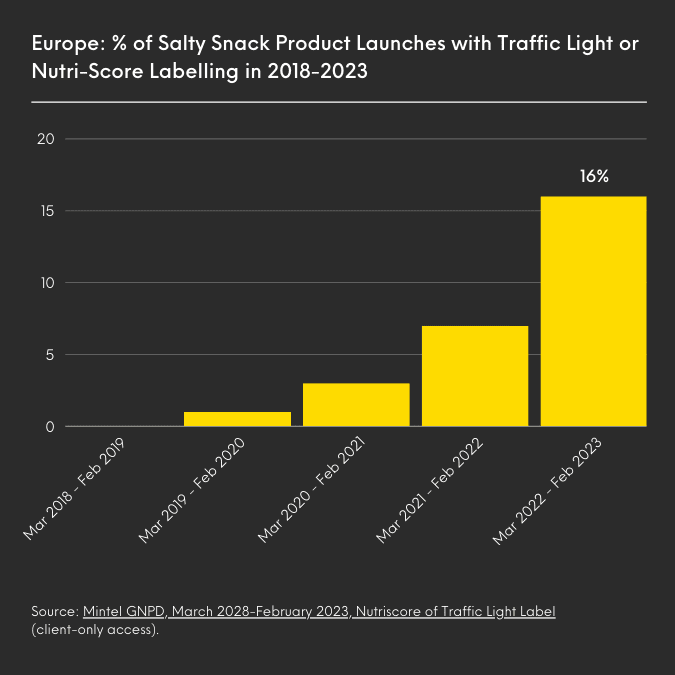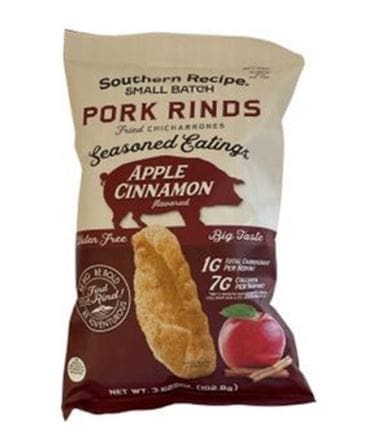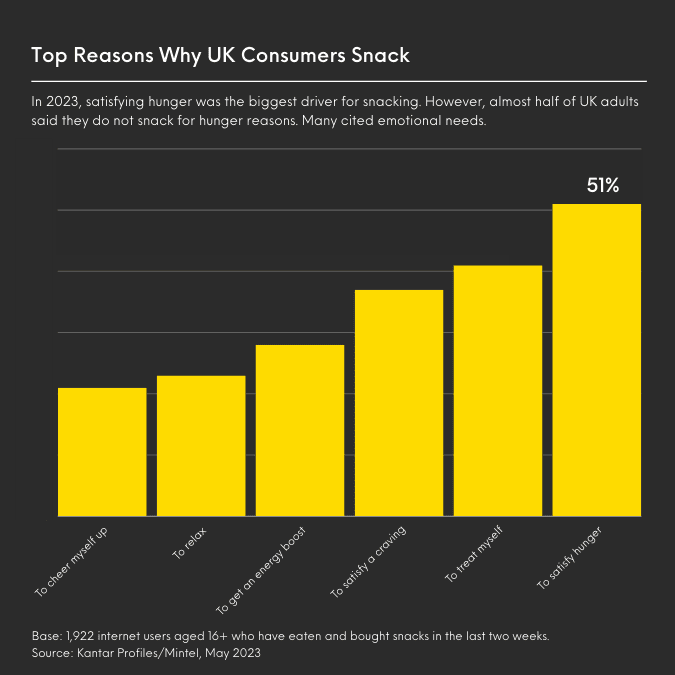The salty snacks market has been somewhat shielded from inflation, however, rising prices have impacted consumption habits. Is your brand ready to meet consumers’ evolving expectations?
Snacking is a near-universal habit. Mintel’s research reveals that over 80% of consumers in the UK, Germany and the US snack between meals. The salty snacks market has seen positive growth, thanks to the wide range of products available, and the fact that they are relatively affordable. However, rising prices have had an impact on consumption habits, and consumers are now demanding more value from their snacks, aside from lower price points.
In this new economic landscape, snackers are looking for affordable treats, better for you (BFY) options, and flavour innovation. They are also more likely to snack for emotional reasons, such as to relax or treat themselves during times of financial uncertainty.
In this article, we will explore the emerging trends that are shaping the future of the salty snacks market. We will look at how brands are innovating to meet the needs of the modern snacker, and how retailers can create snacking experiences that are more meaningful and relevant.
4 Salty Snack Trends Your Brand Needs to Know
Snacking on a budget
Like many industries around the globe, the salty snacks market is feeling the pinch of inflation, global conflict and adverse climate events. With soaring commodity and transport costs, brands have been forced to pass the cost along to consumers through price increases. This has made it difficult for salty snack brands to prove their value beyond price, as 45% of Germans see salty snacks as a low priority for their shopping basket. Major expenses are driving economising behaviour within the category which has seen people buying more snack multipacks, purchasing special offers, buying from discounters and more own-label products. It has also meant that over half of UK snackers have cut back on the number of snacks eaten in response to rising prices. However, salty snack brands have an opportunity to capitalise on consumers’ strained finances; as many limit their out-of-home leisure activities, brands can drive demand by positioning themselves as a perfect accompaniment to a night in.
To remain a household staple, salty snacks need to innovate to keep up with consumers’ savvy behaviours. One way to do this is to use the wonky veg method and sell imperfect snacks. Not only would this help save manufacturers money, but it would also prevent waste and carry a lower price tag for shoppers. Additionally, salty snack brands can focus on creating a perception that snacks are not just junk food, but can also be a positive contributor to nutrition intake – like nuts or fruit crisps that can help meet recommended fruit and vegetable intake.
Explore Mintel’s Snacks Market Research
The rise of the healthy snacking market
The pandemic has had a lasting impact on consumer behaviour, with many becoming more conscious of their health and nutrition. This has led to an increased demand for health-promoting snacks, such as those containing natural ingredients, low sugar and high fibre. Better-for-you (BFY) claims provide a natural route of innovation in the salty snacks market, underpinned by government initiatives like Germany’s BMEL and the UK’s HFSS legislation which both promote healthier diet and lifestyle choices.
Consumers’ appetite for nutrition-dense food is evident in the success of Nutri-Score and traffic light labelling systems in Europe. These systems benefit the consumer by reducing the effort to find healthier snacks and empower them to make mindful choices. They are also trusted with 2 in 5 Germans avoiding foods with a low nutrition score and 6 in 10 UK adults believing that traffic light labelling is a good indicator of healthiness. Applying Nutri-Score or traffic light labels to salty snack products is an opportunity for producers to be transparent about the nutritional profile of their products, help to reduce obesity and other chronic diseases, and promote a healthier food environment.

Mintel’s insights reveal that North America is also seeing a growing demand for health-boosting snacks, with a third of US consumers saying that snacks with functional benefits are worth the price. This reinforces the need for ongoing product development in this space to deliver healthy indulgence. Toodaloo is a great example of a brand responding to this trend with its Turning Heads Adaptogenic Trail Mix. This particular mix is said to support skin health and includes functional ingredients, such as hibiscus and white rose. Toodaloo has also recently launched a range of functional snack mixes that claim to provide holistic balance and include adaptogens, which are mushrooms that reportedly help the body deal with stress and restore balance. Toodaloo is leading the way in the healthy snacking market, demonstrating how companies can capitalise on the health-positive trend and innovate their range to meet consumer demand.
Salty snacks flavour fusion era
Flavour, indulgence and ingredient diversification will be key priorities for the future of salty snacks, especially in the Asian market. While consumers have their favourite snack flavours, Mintel’s research shows that three-quarters of Chinese snackers say they would like to try exotic-flavoured snacks, revealing how discovering new flavours is an important part of enjoying the category. A brand that has captured the adventurous tastebuds of consumers is Hong Hong’s Pop! Gourmet Popcorn, which offers a Matcha Latte & Coconut Oil Sea Salt flavoured popcorn that is made using the highest quality ingredients, including Japanese Matcha.
Across the pond, flavour innovation remains essential for salty snack brands targeting the treat occasion. In fact, a third of UK snackers eaters and buyers would look for an exciting flavour when choosing a snack as a treat. To keep established consumers happy, brands need to maintain core, familiar flavours while adding more unusual variants to their range. But how can brands ensure their flavour NPD gets noticed? Packing should communicate the flavour effectively, and brands should invest in both ATL and in-store marketing. By flagging up new flavour launches in snack aisles, brands and retailers can capitalise on the strong impulse element of snack buying and ensure that their flavours are top-of-mind at the crucial point of purchase.
Limited edition and seasonal flavours, though long-established in the category, remain a key vehicle for brands to tap interest in newness and drive excitement amongst snack eaters. In the US, salty snack brands are stretching the culinary imaginations of their seasonal product offerings. Southern Recipe’s Small Batch Pork Rinds are leading the way with their Apple Cinnamon Flavor and Cranberry Jalapeno flavours combining the inherent salty nature of pork rinds with sweet flavours. This salty-sweet combination is a refreshing twist on traditional seasonal products that will attract renewed excitement.

Salty snacks for the soul
Snacking is no longer just a convenient solution to hunger. It is also a way to fulfil our emotional needs throughout the day. In fact, Mintel’s research shows that seven out of 10 US consumers snack to relax and four out of 10 Brits snack to treat themselves. For Millennials, the emotional appeal is even stronger, with two in five snacking to relieve stress and boredom. Retailers have an opportunity, both with messaging and product development, to reimagine what a snack is and what snacking can mean to consumers. Brands need to be versatile and expand their ability to meet different occasions. For example, they can position snacks as a way to relax and indulge or even develop snacks that are playful or inspired by nostalgic childhood flavours. By understanding the emotional reasons why people snack, brands and retailers can create snacks and snacking experiences that are more meaningful and relevant to consumers.

How can your business prepare for the future of salty snacks?
- Future-proof supply changes
Brands in the salty snacks market need to look at solutions to help mitigate the effects of climate change on agriculture, which will impact supply chains, as already seen in Australia’s potato shortages. Investment is necessary to discover new production methods and crops that are resilient against extreme weather conditions to ensure a stable supply of ingredients. - Create digital experiences
As the digital space continues to expand, brands are increasingly leveraging the metaverse to engage with their consumers in innovative ways. By combining elements of both the physical and digital worlds, salty snack brands can create an immersive experience that reaches a wider audience and drives greater engagement.
Mintel’s Key Takeaways
Despite the challenges posed by inflation and global events, the salty snacks market remains a household staple. To stay ahead of the curve, brands need to innovate and meet consumers’ changing needs. This includes offering healthier snack options, embracing new flavours, and positioning snacks as a way to fulfil emotional needs.
Is your business responding to the evolving attitudes and preferences of snackers? With Mintel’s leading independent market and consumer research, you can focus your strategies to align with the latest trends and developments in the global salty snacks market. Explore our extensive Snacks Market Research, or fill out the form below to sign up to Spotlight, Mintel’s free newsletter for exclusive insights.
Sign up to Spotlight








